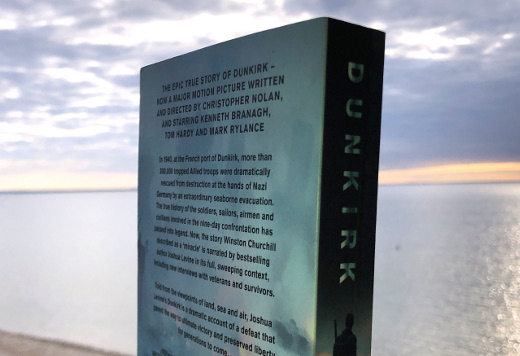My Takeaways From The Book Dunkirk
For years I was familiar with what I remember as the “battle” of Dunkirk. Memories recall a battle and evacuation from the French city during World War II. To be completely honest, the main reason why I remember this at all is because I was born in Dunkirk, New York, which gets its name from the French city. An opportunity to truly learn what happened then and there would complete this connection.
Receiving the book Dunkirk: The History Behind the Major Motion Picture as a gift was very much welcome. A few pages into it I quickly learned this was not a book based on the movie, rather the story of what happened in Dunkirk, France in 1940 that was the basis for the movie. The author, Joshua Levine, was a historical advisor to the movie Dunkirk which was written and directed by Christopher Nolan and came out in 2017.
As you might guess, this book widened my eyes to the real story of what happened in Dunkirk and other related fronts of the war in Europe. Featured were many stories of what really was a rescue of thousands of British and some French troops from the beaches of Dunkirk. Where greater context of the overall state of the war was presented, the focus of this book – as well as the movie – is what happened on the ground in and around Dunkirk.
Where there are many lessons to be learned in wartime, I had a few specific takeaways from this book and the story it told.
Last Chance at First-Hand Accounts – The book was written about 5 years ago, just before 80th anniversary of the rescue at Dunkirk. Fortunately there were still some surviving soldiers and participants in the rescue effort alive who were able to tell their story. This added greatly to the stark reality of the war and the enormity of the rescue effort.
Newly Invented Degaussing Aided The Rescue – Degaussing is the process of removing a magnetic field, and is often referred to as demagnetizing or wiping. It was a relatively new process that came out of research during World War II, and played a great role in the rescue. Hundreds of ships were degaussed in order to reduce the chance of magnetic mines being drawn to them and blowing them up.
The Term “Dunkirk Spirit” Is Still Used Today – The term Dunkirk Spirit came from the effort of many to rally around the cause of rescuing the soldiers from the shores of the French city. I occasionally see the phrase in use today in reference to any collective of people rallying around a cause. It’s good to see that even today some good comes from the tragedy of war that led to the need for the rescue.
Dunkirk is a very well-written and engaging story on the rescue. At some points it is hard to follow all of the soldiers and military leaders, but I tried not to focus on individuals instead on the monstrous rescue effort. The book concludes with backstory on the production of the movie itself, from Nolan’s script and creation of characters and the challenges of recreating the rescue scenes. With an eye towards authenticity over computer-generated imagery, the level of effort to recreate some scenes was near equal to was done during the rescue itself. One such example was to create a “pier” out of military vehicles, which included sinking them into the water so soldiers could pass over them.
If you enjoy history or simply like stories of overcoming the odds, I highly recommend Dunkirk: The History Behind the Major Motion Picture. As I pass along all books I read, this one goes to my Father-in-law, a military veteran himself, who also enjoys such stories.
This is from The Hot Iron, a journal on business and technology by Mike Maddaloni.
Did you enjoy this? Subscribe to The Hot Iron by RSS/XML feed or Read by Email
Book Take-Aways • (0) Comments • Permalink

